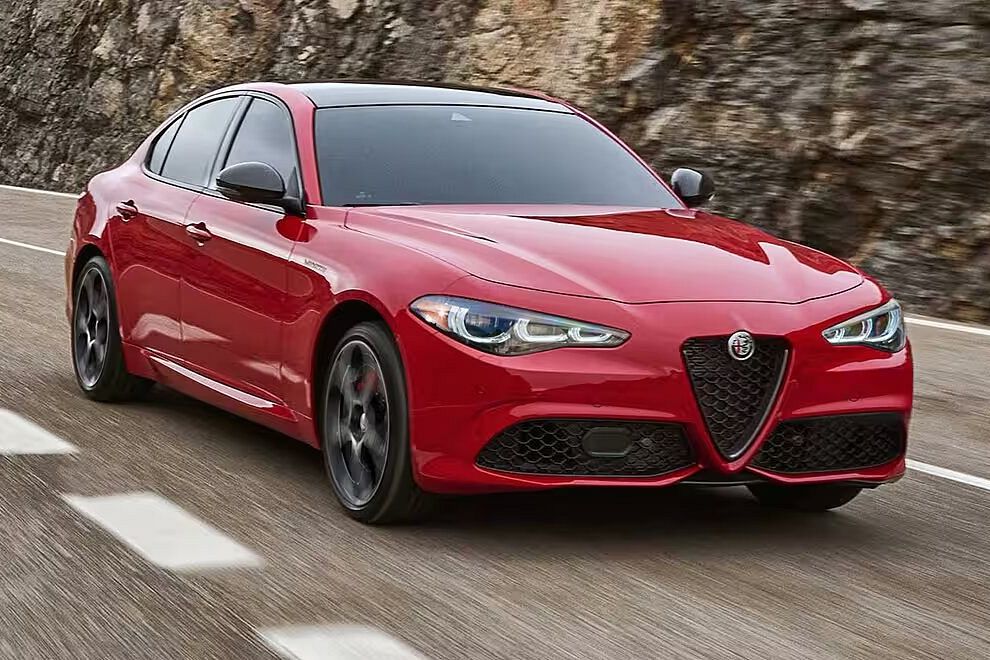
Just as the MGB is likely the only MG most Americans will have ever seen in the metal, the Giulia Spider is the car which is most often associated with Alfa Romeo. Not only that, but even when those more knowledgeable of the brand say "Spider", it is the Giulia Spider they are talking about, even though it is hardly the only convertible Alfa has ever made. The Giulia Spider was the replacement for the Giulietta Spider, first introduced in 1954. The Giulietta had been a popular car and it was absolutely beautiful as well.
When the Giulia was introduced in 1966, many lamented the passing of the Giulietta, and felt that the Giulia simply did not live up to the legacy of its predecessor. Both were designed by Pininfarina, but the Giulia had a much more modern design, which might not have been appreciated by everyone at the time, but which has since come to be regarded as a classic. This probably has more than a little to do with its appearance in the equally classic 1967 film "The Graduate", where it was the car driven by Dustin Hoffman's character. The Spider was not cheap; its US price in 1966 was $3,950.
You could buy an MGB and a half for that price, or if you could find another $500, you could have your very own Shelby GT350 Fastback. But the Spider was also much more refined than other roadsters of the day, and included such features as four wheel disc brakes. It was also more powerful than most contemporary roadsters, with a twin-cam 1.6-liter four-cylinder engine that produced 109 horsepower. The first Giulia Spiders are also sometimes called "Duetto", as the result of a mail-in naming contest held by Alfa Romeo. This name was picked because of the twin cams, twin carburetors and twin seats which the little roadster had.
This name is officially applied only to the 1966-1967 Spiders, since they were replaced by the 118 horsepower (in carbureted European-spec form) 1750 Spider Veloce for the 1968 model year. The Veloce used a bigger 1.8-liter engine, and even had mechanical fuel injection for the US market which helped it make 132 horsepower. Since the original Spider and the 170 Spider Veloce both have the Series 1 Spider body, they are sometimes both referred to as Duettos. Series 1 Spiders can be identified by the long, rounded tail, a feature which earned them the nickname "Osso di Seppia", Italian for "cuttlefish bone".
The Series 2 Spider debuted in 1970. It had a revised tail, now a cut-off design, to replace the rounded tail of the Series 1. It was otherwise largely unchanged until 1974. A number of changes began at this point, including the introduction of the Spider-Targa, featuring a Porsche-style removable solid roof section and fixed rear window. These were available only by special order, and they remain an extremely rare example of the Spider, with only 2,000 having been built. A small rear seat was added as well, which was hated by some but many remained indifferent.
Universally hated by everyone but the NHTSA was the replacing of the elegant chrome bumpers with the big, heavy, hideous black bumpers which were required to make the Spider compliant with new crash-safety guidelines. The Series 3 Spider was introduced in 1983, and was followed by the Series 4 in 1990. Some new features were introduced over the year, including a high-performance Quadrifoglio Verde (green four-leaf clover) edition and an entry-level Graduate edition. But for all the changes made during the long 1966-1993 production run of the Spider, it changed surprisingly little.
The Spider met with more resistance from the automotive press than any other Sixties roadster, yet it lasted longer than any of them. The Spider was even brought back in 1995, with a convertible version of the Alfa Romeo GTV. This was, unfortunately, not quite up to the name. It was an attractive car, and reasonably fun to drive, but it was front-wheel-drive and lacked the simple elegance of the preceding cars. It lasted longer than many naysayers had expected, but this is a group which should perhaps learn that any convertible Alfa will sell no matter what.
The good news for the Duetto purists is that another Spider is said to be in the works, a replacement for the GTV Spider, which was discontinued in 2006. This new Spider is going to be developed with help from Mazda and will share a number of mechanical components with the MX-5, king of the modern roadsters. Assuming all goes as planned, we should see this new car in 2015. Of course, when it comes to a new car with Alfa looks and MX-5 handling, any kind of wait is too long. History has vindicated the Giulia Spider, and we look forward to the modern classic that the 2015 model will surely be.

